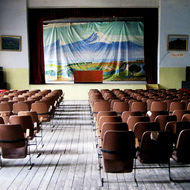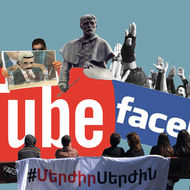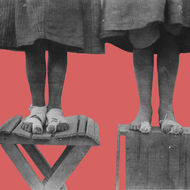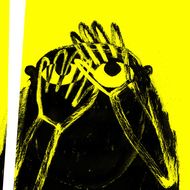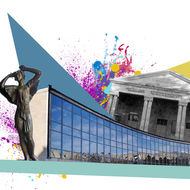Search articles
Search results for
The Ambivalence of Shahumyan: Armenia’s Bolshevik Ghost
By Hovhannes Nazaretyan
A prominent Armenian Bolshevik activist and head of the Baku Commune Stepan Shahumyan’s ghost now wanders through his native Caucasus. Armenians have largely forgotten his century-old verbal attacks on nationalism and insistence on internationalist fraternity of peoples, yet his statues remain and streets, villages and towns are named after him in Armenia and Artsakh.
The Armenian Diaspora
By Hovhannes Atabekyan
The Diaspora has been an inherent component of Armenian reality since antiquity. Its enduring roots, affluent heritage and indispensability to the Armenian nation is difficult to challenge. This article examines the global entrepreneurial endowment of the Diaspora, how it developed and what its role can be today for the Republic of Armenia.
The Armenian Footprint of Isfahan
By Arshaluys Barseghyan
Isfahan is more than just a place with an abundance of blue, hospitality and diplomacy, Isfahan is also Julfa, the old Armenian neighborhood where the domes of churches are not pointed but rather round like a Mosque’s, where an Armenian community, since 1605, continues to exist and has become an inseparable part of the fabric of this city once built to be the center of the world.
The Armenian Government’s Plan to Change the Constitution
By Lusine Sargsyan , Harout Manougian
Since Armenia’s independence, every head of government has shaped the country’s Constitution; Prime Minister Nikol Pashinyan has made it clear that he will not be an exception.
The Armenian Identity and the Armenian State
By Nareg Seferian
Nareg Seferian discusses his experiences dealing with ethno-national identity, the current situation with the Armenian identity around the world, and how it plays out vis-à-vis the Republic of Armenia.
The Armenian Media Revolution
By Samvel Martirosyan
Without social media and the press, the “Velvet Revolution” could have evolved completely differently. To some extent, what took place was in fact a media revolution. And now, post-revolution, we can register that the media landscape in Armenia is no longer what it was until April of this year. Samvel Martirosyan discusses some of the qualitative and quantitative changes in the Armenian media.
The Armenian Orphans of the Genocide: Separation, Reunion, Loss and Sacrifice
By Arpine Haroyan , Gayane Ghazaryan
Many took the harrowing experience with them to their graves. Others would share only fragments of memories. All of them suffered unimaginable loss. They were the orphans of the Armenian Genocide and their stories must never be forgotten.
The Armenians Elected to Georgia’s First Parliament
By Norik Gasparyan
Eight ethnic Armenians were elected to the First Constituent Assembly of Georgia in 1918. Four were members of the Armenian Revolutionary Federation and the others from the Georgian Social Democratic Party. This article explores their lives and political activities.
The Art of Anti-Corruption
What is the art of anti-corruption? A year-long campaign sought to raise awareness on the effects of corruption on Armenian society. The “Art of (anti) Corruption” organized by Impact Hub Yerevan and supported by the EU Delegation to Armenia is a poster art exhibition and EVN Report is featuring a selection of the works on display.
The Art of Vanadzor, Armenia’s Erstwhile Industrial City
By Kushane Chobanyan
Vanadzor’s Hovhannes Abelyan Theater, built in the early 20th century, is just a few meters away from the Fine Arts Museum. Both buildings hold the memories and feelings of Armenia’s third largest city.



